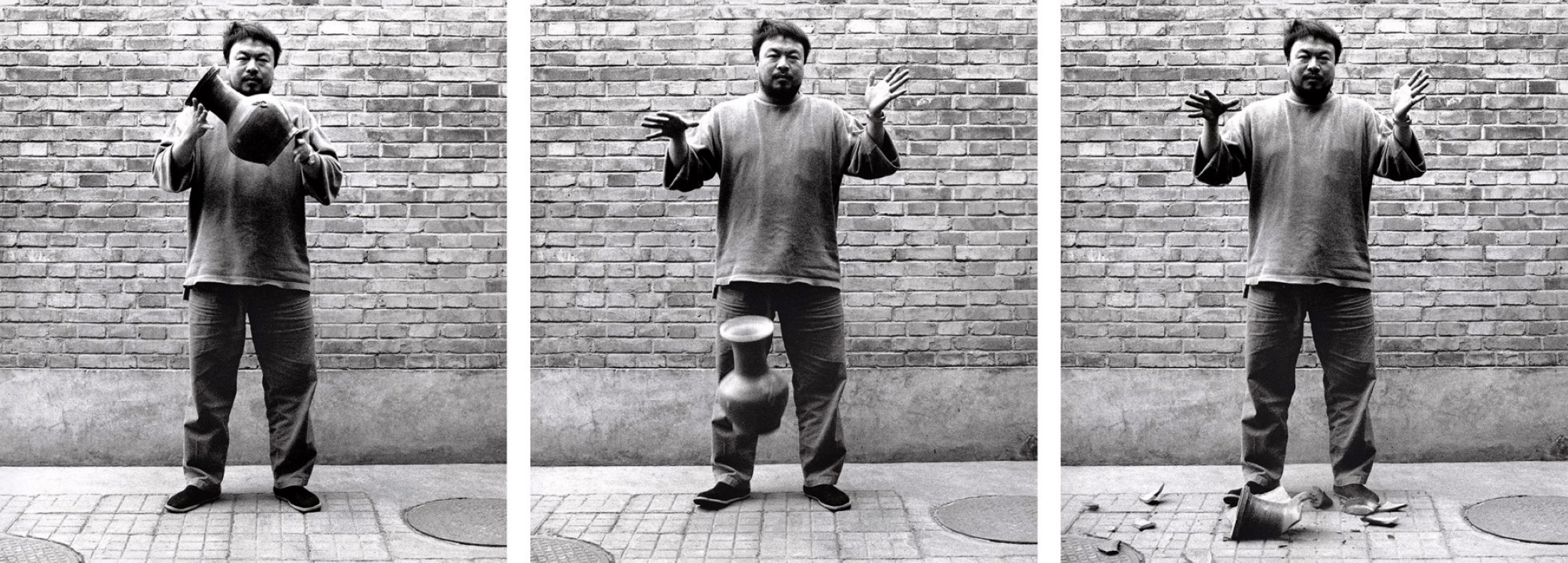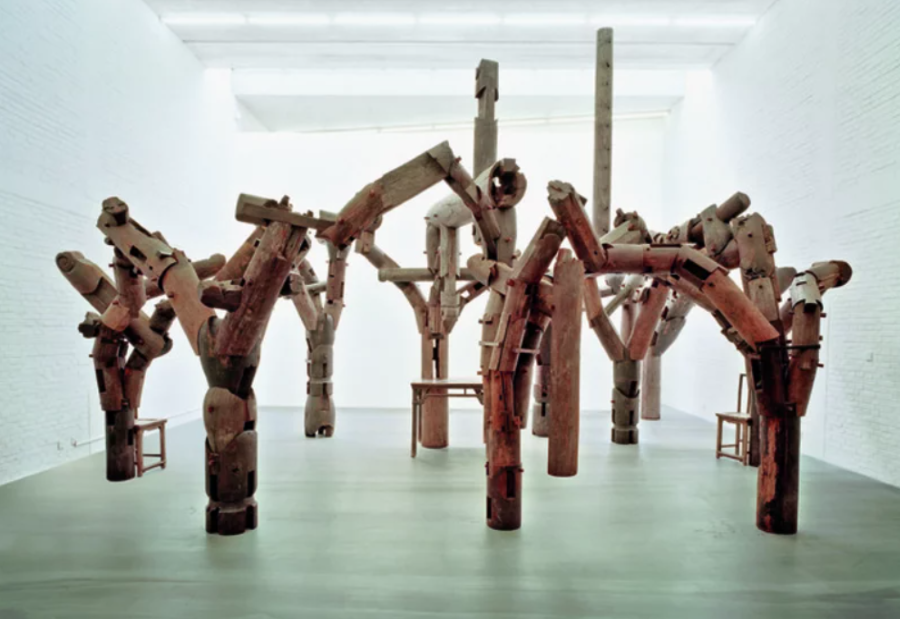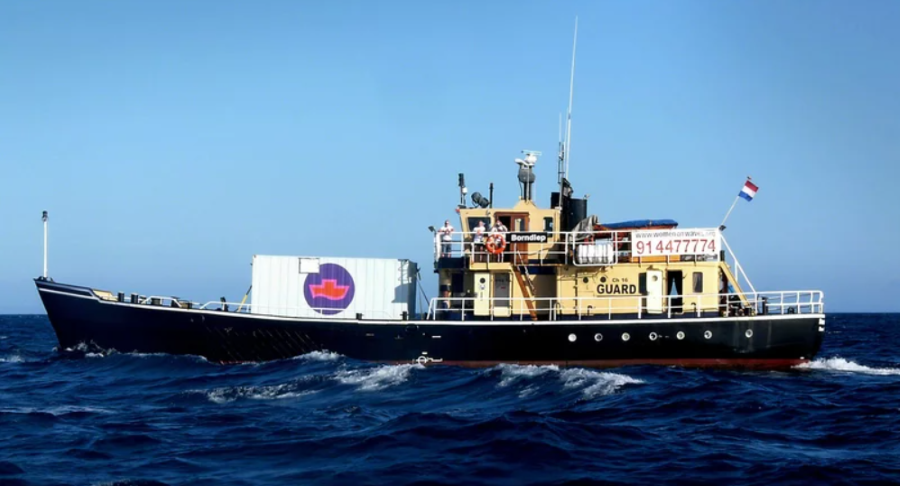
Art as activism: Visionaries who have defied the status quo
Activist art addresses political and social issues historically perceived as threatening to governments and their regimes. This is because their non-conformist and enlightening messages change the status quo, which the power of governmental authority relies upon.
To reduce the threat, governments have historically and continue to implement censorship of activist art. The famous 20th-century philosopher, Theodor Adorno articulates this issue in his renowned quote,
every work of art is an uncommitted crime.
Adorno alludes to governmental regimes which silently or actively outlaw activist art, violating freedom of expression. His quote remains globally relevant today with several governments’ authoritarian, legislative and fear-mongering oppression of activist art.
Modern artists and organisations who have battled with the ‘uncommitted crime’ of their activist art include the ‘Women On Waves Foundation’ and Ai Weiwei. The following examples of their work are quintessential examples of the struggle described by Adorno. They challenge human rights issues such as pro-abortion and freedom of expression and have gained mass followings across the globe. By threatening the power of anti-abortion and totalitarian regimes, they have dealt with severe, governmental-induced consequences.
Ai Weiwei
Politics is a factor considered in every aspect of Weiwei’s artwork. He expresses the toughest and most controversial truths in various forms of art, from photography and documentaries to sculpture and architecture. He predominantly focuses on human rights and critiques China’s ruling Communist Party. Consciously or not, Weiwei directly addresses the issue outlined by Adorno, that
every work of art is an uncommitted crime.
To Weiwei, every piece of his work must exercise his freedom of expression, advocating this right despite the disapproval of governments (particularly in China.) He makes light of the severity that governments approach him with;
his work is both statement and playful event. He's a troublemaker, but he never gets caught. His work shows us that anything goes, anything is possible,
as outlined by the Professor of Art at Cornell University, Xiaowen Chen. Whilst Weiwei’s artwork critiques various social and political issues, the statement that he will exercise his right to expression is a thematic continuum through every piece.

Ai Weiwei, Fragments, 2005 © Ai Weiwei Studio . M+ Sigg Collection, Hong Kong. By donation
Fragment by Ai Weiwei is a piece of activist artwork. The installation is made from destroyed wood from Qing Dynasty (1644–1911) temples in China. Weiwei’s fragile and chaotic assemblement of pillars is a recreated map of China’s borders. The architectural delicacy of this joinery is a critique of China’s socio-political background and foreign affairs. By reconceptualising salvaged materials from the past, Weiwei highlights the ever-changing instability of China’s landscape.
When art leads to imprisonment
In 2011, Ai Weiwei was imprisoned for 81 days for his activist artworks (such as Fragment.) Since his art exercises freedom of speech that threatens China, the government took severe action to censor him and his colleagues. Weiwei was imprisoned on tax charges, although it is clear from the entire lack of legal grounds that this was an excuse to detain him and induce fear into Weiwei. During his detention, the BBC’s source said the police told Weiwei,
This is what happens when you criticise the government. You made China look bad, now we want to make you look bad.
Upon Weiwei’s release, several bans were imposed on him, but this neither stopped him nor slowed his activist art down. He commented on the importance of advocating
for people who have no voice of their own [and] if you don't speak out you let a lot of people down, you put them in danger.
Weiwei even followed his imprisonment by creating his art piece, S.A.C.R.E.D (2011-2013.) This is a public exhibition of 6 installations which depict the hardship and humiliation which Chinese authorities terrorised him. His exhibition is a demonstration of Adorno’s quote,
Every work of art is an uncommitted crime.
Women on Waves Foundation
The Women on Waves organisation is an activist group that advocates against scientific and medical laws restricting women, particularly concerning anti-abortion laws. Their activist art and aid consist of design, filmmaking and curatorial exhibitions. By using their art to draw attention to the danger of anti-abortion laws, they threaten the regimes of several countries whose governments have outlawed abortion. Kinja Manders, the Women on Waves project manager, explained:
We’ve always been interested in the link between activism and art, [...] and in finding creative and conceptual solutions that are on the edge.
They specifically emphasize that an equal number of abortions occur in countries where it's illegal and that the majority of unsafe abortions result in serious health issues or even death. According to the WHO, annually, 55,000,000 abortions take place, of which 20,000,000 are illegal and unsafe, and 80,000 women die from the complications of illegal abortions.

Women on Waves, Atelier van Lieshout, A-Portable, 2004 © Women on Waves
The Women on Waves organisation provides aid internationally to women who require abortions. This is conducted on their most renowned piece of activist art – their boat! It is named the A-Portable, designed by artist and sculptor Atelier van Lieshout. The A-Portable travels from country to country, providing women with various sexual aid services, including knowledge, consultations, and the abortion pill. For every country which has outlawed abortion, they sail the women who require the abortion pill to international waters, where their services can legally be provided. Lieshout’s artistic design tests the boundaries of Adorno’s
every piece of art is an uncommitted crime.
His activist artwork in architecture and design is ingeniously practical and mobile; Lieshout designed the A-Portable to travel on both land and sea. His artistic mobile agility symbolises liberation, autonomy, and design at the edges of the law, which tests the limits of an “uncommitted crime”.
The grand and artistic expression of the A-Portable has led to a reputation regarded as the ‘The Boat of Death.’ Its liberal and loudly expressive power commonly destabilises the anti-abortion confidence within societies they visit. As a result, governments fear and attempt to suppress their power; for example, Dutch authorities have attempted to restrain the Women on Waves organisation from performing. The organisation has been thoroughly debated in the Dutch parliament and received many obstacles prohibiting them from gaining a licence to obtain legal status. The Dutch Parliament went to the extent of publicly threatening jail time if the organisation continued their mission. To this, they echoed Adorno’s quote, responding that the A-Portable is
not a medical facility, but a work of art,
reinstating the borderlines of activist art.
Ai Weiwei and Women on Waves are just a couple of activist artists who encounter the issues outlined by Adorno’s quote,
every work of art is an uncommitted crime.
However, their determination and insistent freedom of expression that advocates for human rights tell incredibly inspiring stories that we may all benefit from as art enthusiasts.
Want to read more articles from us? Check out the London BFI movies not to miss movies.
Credits for the Main photo: Ai Weiwei, Dropping a Han Dynasty Urn, 1995 (printed 2017), Three gelatin silver prints, 148 x 121 cm each © Ai Weiwei
